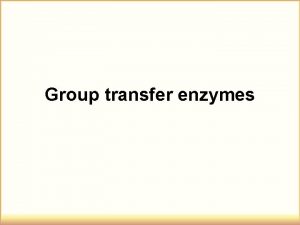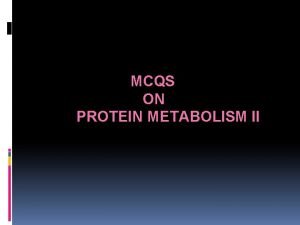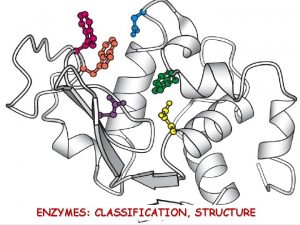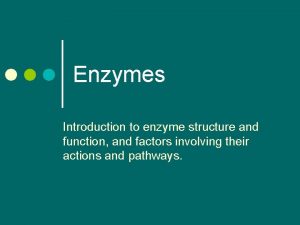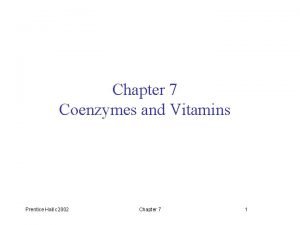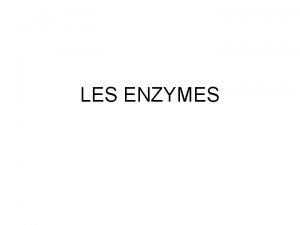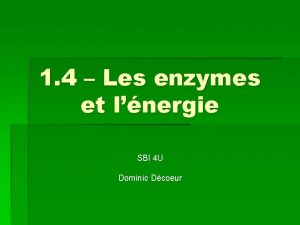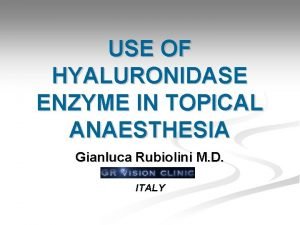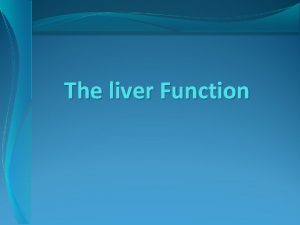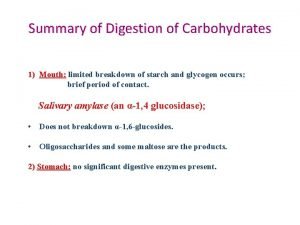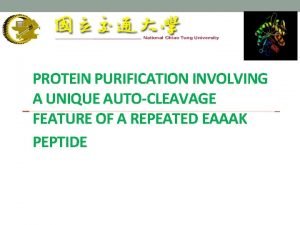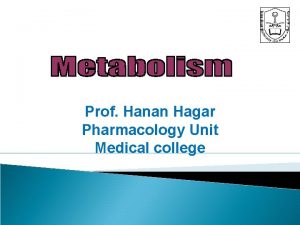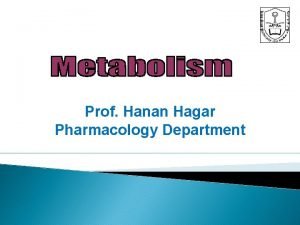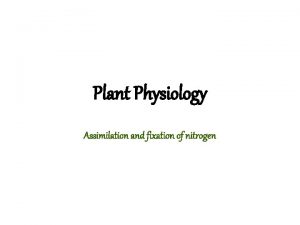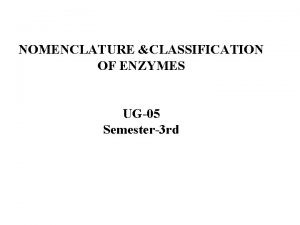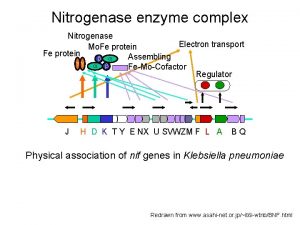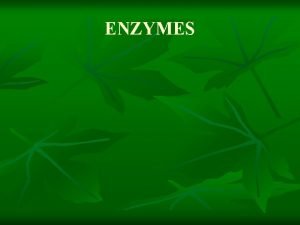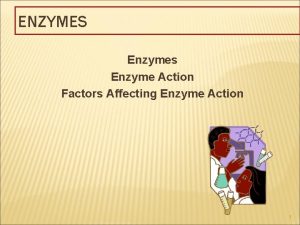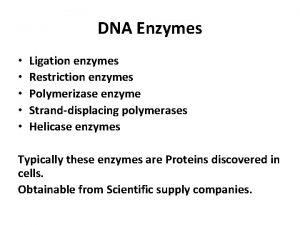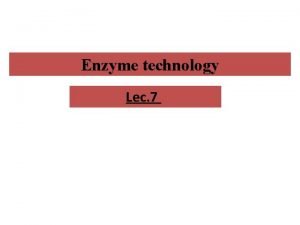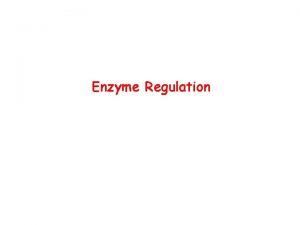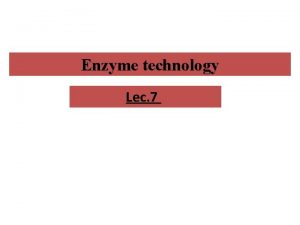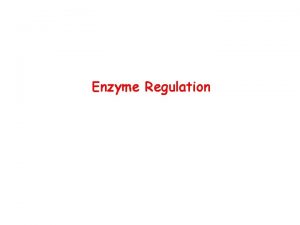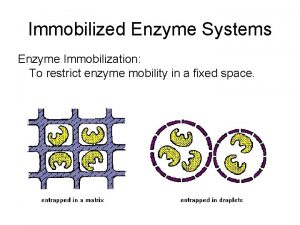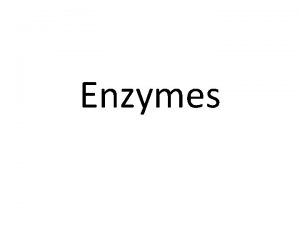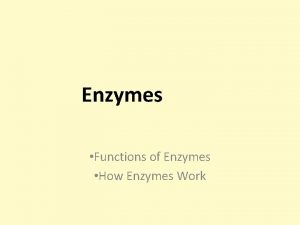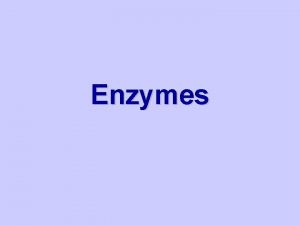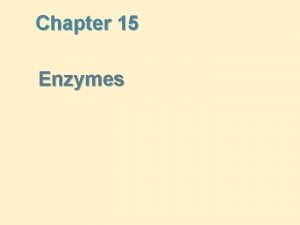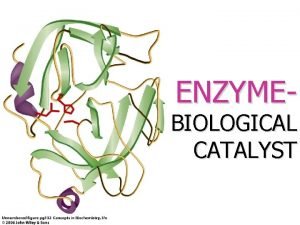Group transfer enzymes Group transfer enzymes Enzyme Coenzyme

















- Slides: 17

Group transfer enzymes

Group transfer enzymes Enzyme Coenzyme or Delivered atom or group cofactor Alcohol-dehydrogenase NADP Hydride ion (H-atom + electron) Catechol-O-methyltransferase S-adenosyl methionine Methyl group Homocysteine-methyl-transferase Cobalamin Methyl group e. g. Formyl-transferase R-tetrahydrofolate methyl, methylene, formyl group Amino acid-transaminases pyridoxal phosphate amino group Kinases Mg-ATP phosphate group

ATP and phosphoryl transfer reactions Possible structures of the Mg–ATP complex

ATP and phosphoryl transfer reactions ATP 4– + H 2 O = H+ + HPO 42– + ADP 3– r. G 0 = 30, 5 k. J/mol (i) Storage of energy for later use (creatin →creatin-phosphate) (ii) change in the conformation of a protein to control enzyme activity or transport process or in order to perform work (iii) In order to cover the energy need of the various metabolic processes, etc.

ATP and phosphoryl transfer reactions Na+, K+ pump R-COO- + Mg-ATP → R-C(O)-O-PO 32 - + Mg-ADP Phosphorylation of protein side chains R-XH + Mg-ATP → R-X-PO 32 - + Mg-ADP Glycolysis glucose + Mg-ATP → glucose-6 -phosphate + Mg-ADP

ATP and phosphoryl transfer reactions 1, 3 -bisphoglycerate 3 -phosphoglycerate An example for the formation of ATP

ATP and phosphoryl transfer reactions A possible mechanism of the protein kinases

ATP and phosphoryl transfer reactions A reaction catalysed by glutamine synthase

ATP and phosporyl transfer reactions NH 3 Mechanism of glutamine syntethase

Methylcobalamin and B 12 coenzyme Structure of methylcobalamin (X = CH 3)

Methylcobalamin and B 12 coenzyme (corrin)Co. III-CH 3 (corrin)Co. III + CH 3– (corrin)Co. III-CH 3 (corrin)Co. II + CH 3● (corrin)Co. III-CH 3 (corrin)Co. I + CH 3+

Methylcobalamin and B 12 coenzyme The reaction catalysed by homocystein-methyl-transferase

Methylcobalamin and B 12 coenzyme General mechanism of the B 12 coenzyme dependent isomerases and several representants General mechanism Enzyme R 1 R 2 R 3 R 4 X Glutamate-isomerase H CH(NH 2)(COOH) H H COO- Methylmalonyl-coenzyme A H H COO- H C(O)-S-Co. A Diol-dehydratase H OH H CH 3 OH Ethanolamine-ammonia-lyase H NH 2 H H OH

Methylcobalamin and B 12 coenzyme General mechanism isomerase: of the B 12 coenzyme (corrin)Co. II + R-CH 2+ B 12 coenzyme-dependent (corrin)Co. II + R-CH 2+ B 12 coenzyme

Methylcobalamin and B 12 coenzyme The (first step) product of the reactions catalysed by the B 12 coenzyme- dependent dehydratases gives an aldehyde by spontanaous water liberation.


 Phosporyl
Phosporyl In alkaptonuria mcq
In alkaptonuria mcq An example of prosthetic group
An example of prosthetic group Function of co enzyme
Function of co enzyme Metalloenzyme
Metalloenzyme Les enzymes allostériques
Les enzymes allostériques Cofacteur et coenzyme
Cofacteur et coenzyme Is a disturbance that transfers energy
Is a disturbance that transfers energy Hyaluronidase enzyme
Hyaluronidase enzyme 5 functions of the liver
5 functions of the liver Digestion of carbohydrates
Digestion of carbohydrates Enzyme purification
Enzyme purification Metabolism of drug definition
Metabolism of drug definition Hagar conjugation
Hagar conjugation Nitrogenase enzyme complex
Nitrogenase enzyme complex Exergonic and endergonic
Exergonic and endergonic Enzyme ec number
Enzyme ec number Nitrogenase enzyme complex
Nitrogenase enzyme complex
